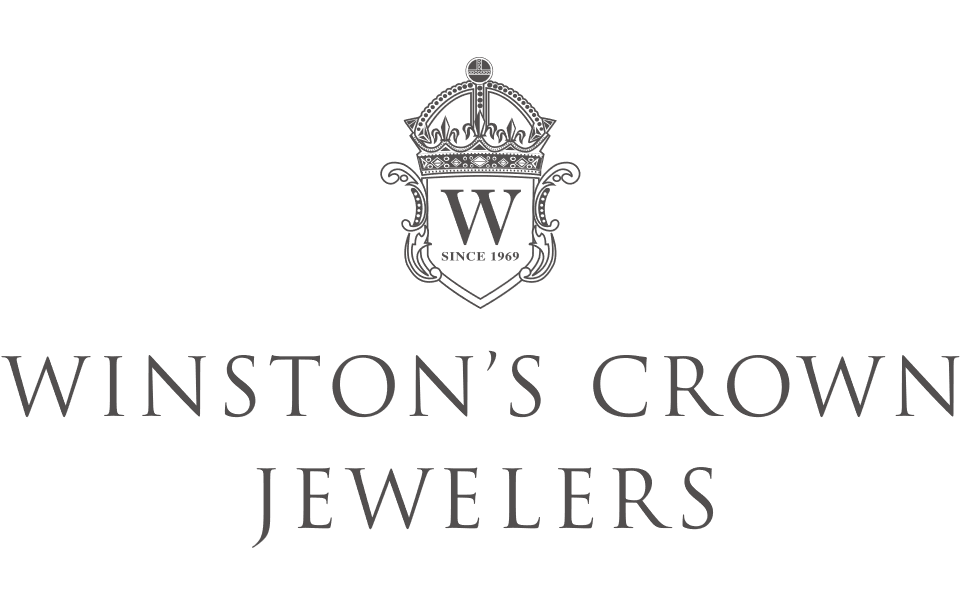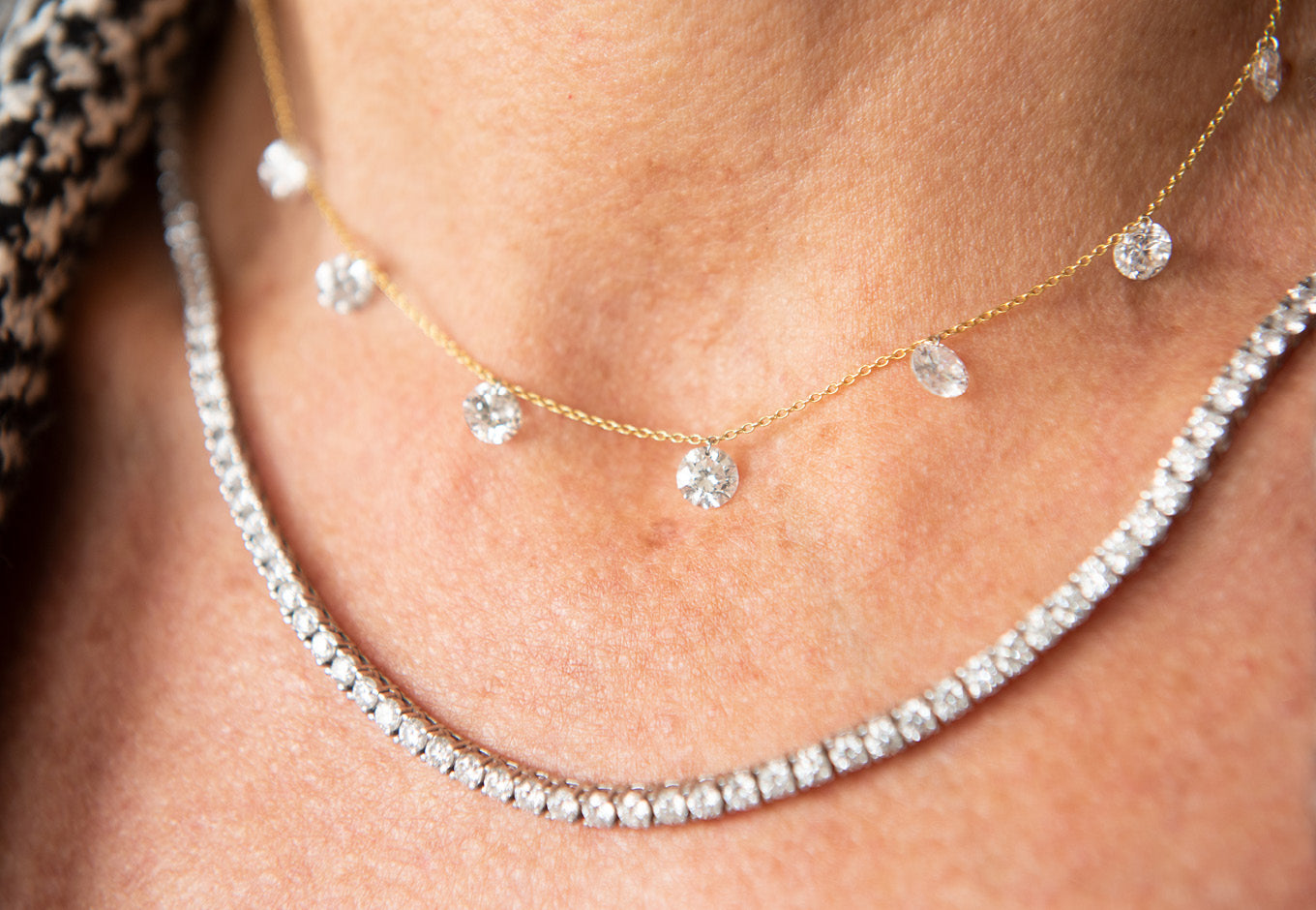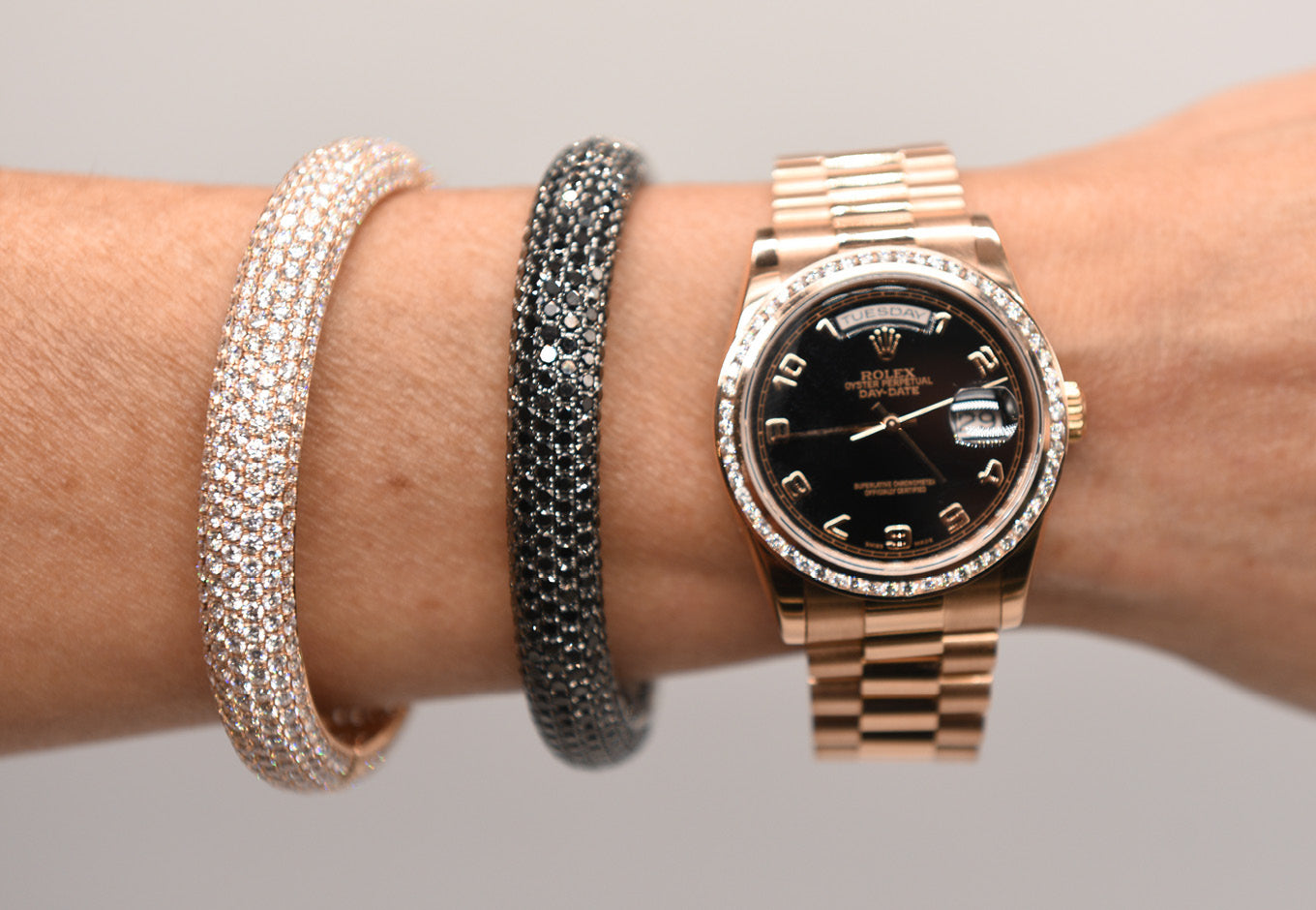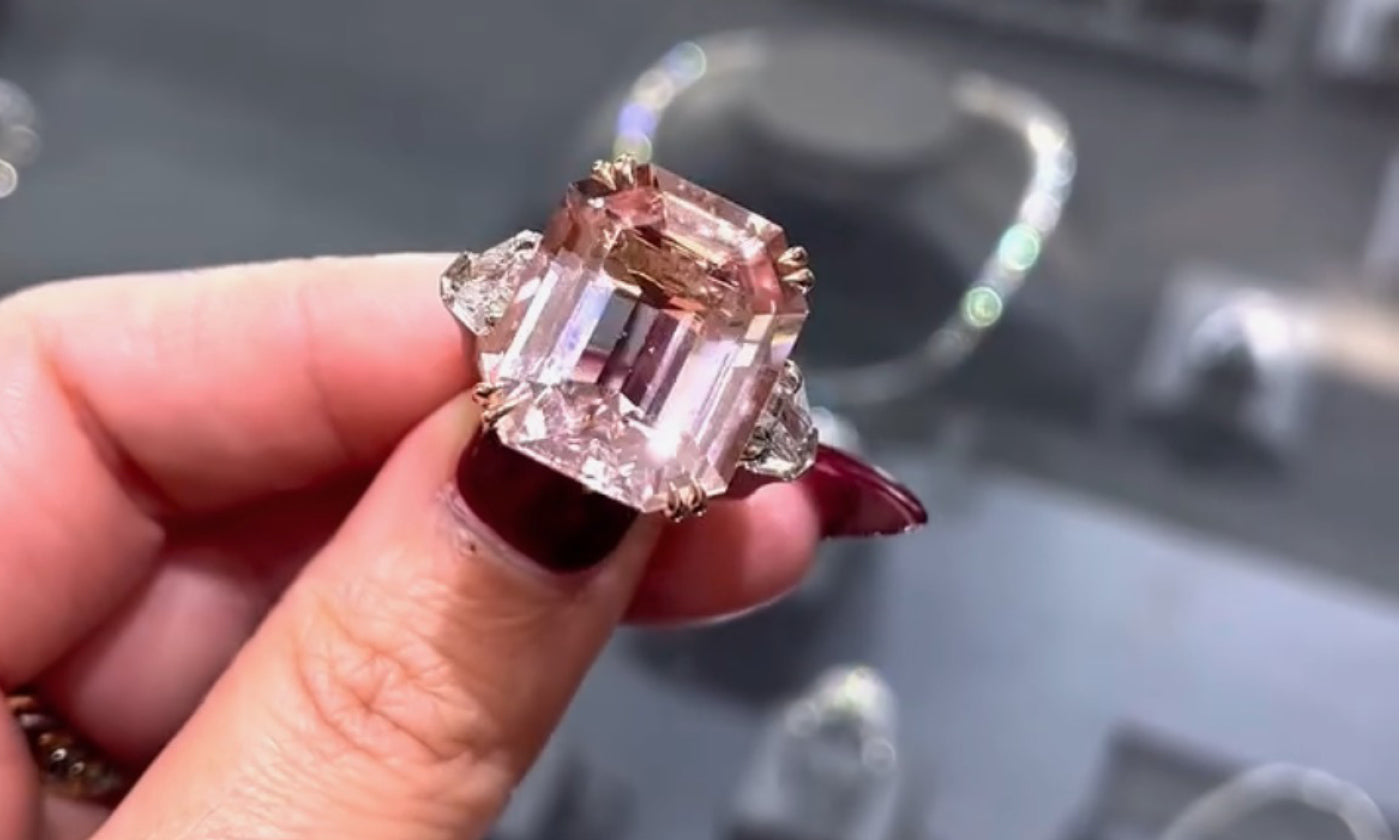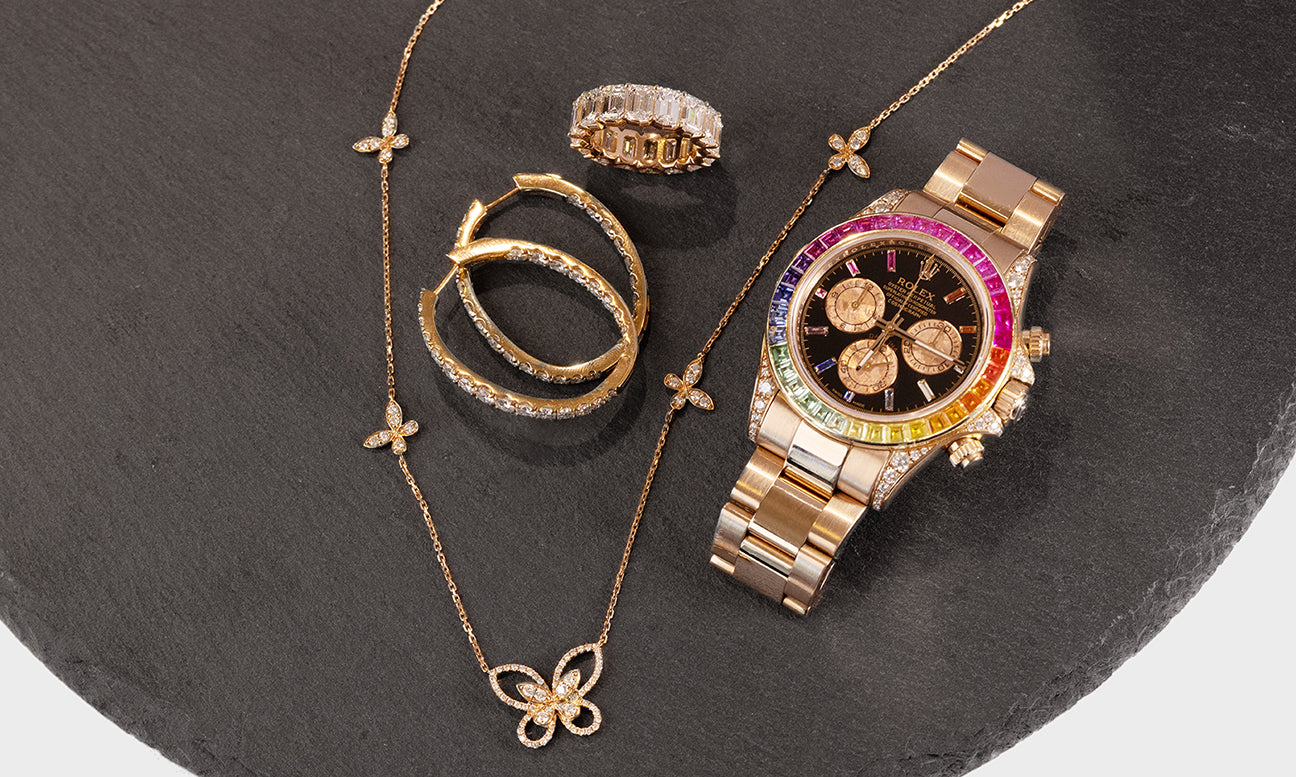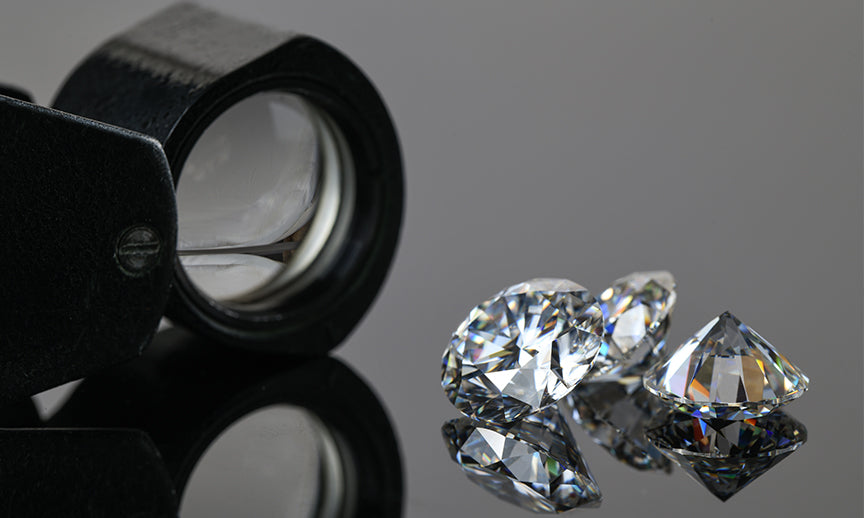
How Can I Tell If a Diamond is Genuine or Fake?
There’s almost no purchase more exciting, refined, and of good taste than a perfect diamond stone. Whether you’re purchasing an engagement ring, a necklace, or a diamond-laden bracelet, you want real diamonds and not cheap fakes that'll lose their sparkle in a month. After all, the appeal of diamonds is authenticity, the real weight of history behind each incredible piece, and the craftsmanship of a genuine cut.
But with all the lab-grown and synthetic options out there these days, how can you tell if a diamond is legitimate? This post will assist you in spotting an authentic diamond.
What Makes a Diamond Genuine?
The four C's identify characteristics that separate real diamonds from the rest: cut, color, clarity, and carat weight. These factors will determine a diamond's quality and value, allowing gem experts to make an assessment of its legitimacy. A well-cut diamond with a high color and clarity grade (meaning minimal imperfections) will likely offer the real deal with impressive value. The cut, proportions, and lack of blemishes give it that coveted sparkle only genuine diamonds have and that fakes simply can’t emulate.
Tools to Determine Authenticity
Professional jewelers have a few tricks up their sleeves to verify authenticity. You may have seen them holding up a small magnifying glass to their eye—that’s called a loupe. It permits close inspection of a diamond for any flaws or notable inclusions that could be a giveaway that is not genuine. They also use diamond testers to measure heat dispersion over the stone. Diamonds have unique thermal conductivity identifiers that distinguish them from illegitimate fakes.
Physical Characteristics of a Genuine Diamond
With the naked eye, you can usually pick up on the hallmarks of an authentic diamond. There’s a reason diamonds are among the most coveted gemstones. Not only do they express serious sparkle and brilliance when the light hits them just right (thanks to their refractive qualities), but they can also have simple imperfections. A gem cutter’s task is to cut the stone so its best natural properties are preserved.
Differences Between a Diamond and a Simulant
It's important to understand that synthetic lab-grown diamonds, while technically real diamonds in scope, aren't the same as natural, mined diamonds. They might be chemically identical, but they're created in a lab and cheaper than the natural gems formed over billions of years - the latter remains more sought-after thanks to that authenticity. “True” diamond simulants like “moissanite” or “cubic zirconia” aren't even real diamonds - they just try to mimic the appearance and fetch lower prices as a result.
Real Diamonds Hold Their Value Better Than Lab-Grown
While real and fake diamonds possess brilliance and allure, natural diamonds maintain a distinct edge in preserving their value over time due to their natural scarcity and timeless appeal. Formed over millions of years deep within the Earth, real diamonds are a better investment as they possess a storied history and rarity that ensures their enduring worth.
How Can I Spot a Fake Diamond?
We tend to think of “the perfect diamond” being a result of great sourcing and cutting, but if a diamond looks too perfect, with absolutely no inclusions or flaws at all, that's a red flag signifying it could be fake. The same goes for prices that just seem unbelievably low for the carat size. Imitators like those outlined above often have a more rainbow kaleidoscope of light refraction instead of the blazing, concentrated sparkle of a real diamond. That doesn’t make them poor alternatives, but it doesn’t mean they’re genuine.
Tips for Purchasing a Genuine Diamond
You can’t be expected to spot fakes reliably if you’re not an expert, nor should you feel silly for needing an expert’s opinion. However, you mustn’t pay genuine prices for fake stones. Only purchase from legitimate, proven jewelers with a history of happy clients. These may also be rated by by official gemological labs like GIA or AGS. If something seems a little off, you’re being pushed into a deal, or the promotion simply seems too good to be true, it likely is.
Find Beautiful Diamond Jewelry From Reputable Jewellers Like Winston’s Crown Jewelers!
Learning to separate the genuine gems from the copycats takes a bit of education, but it's worth it to end up with the real, brilliant deal. With this guide to assist you, and Winston's Crown Jewelers in-house Gemologists and experts to offer you guaranteed authenticity, you’re sure to find your best, genuine diamond cut.
Book an appointment to find your perfect diamond with our jewelry experts!
